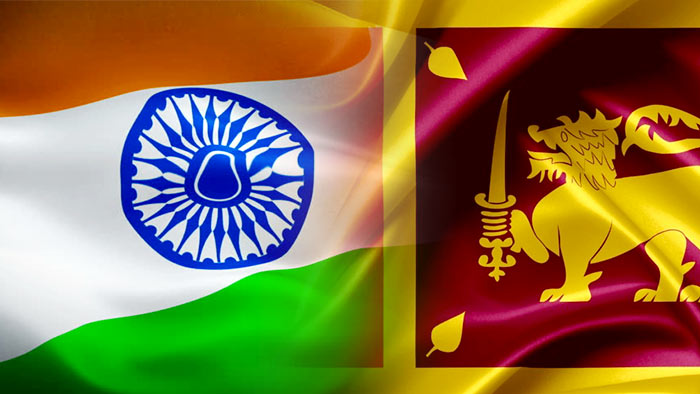Indian banks reluctant to extend Letters of Credit to Sri Lanka

As Sri Lanka grapples with a severe foreign exchange crunch, high street banks in India have turned cautious and selective about their exposures to the island nation.
Several institutions have reduced discounting letters of credit (LC) – the basic instrument for financing trade – issued by many Lanka lenders while others are giving credit to exporters based on the standing of the party, amount, the tenor of the credit, and standing of the bank issuing LCs.
Given the long trade relations, Sri Lanka’s dependence on imports and expectations of credit lines (from India and other countries), and possible currency arrangements, bankers hope that the country would be able to tide over the crisis in the medium term.
At the beginning of December, Sri Lanka’s forex reserves were just enough for a month of imports.
“We have not put a complete embargo on discounting export bills to Sri Lanka. It’s done on the basis of limits available with LC issuing banks,” said a senior official of the State Bank of India, the country’s largest lender.
Among other large banks, HDFC Bank was going slow on handling LCs for exports to Sri Lanka, Axis that has financed many Indian companies with exports to Sri Lanka is being selective, while ICICI Bank has cut limits for Sri Lanka along with some of the other smaller countries for quite some time now. IndusInd, said an official of the bank, is closely monitoring the developments and has been selective in the transactions undertaken.
“There is nothing wrong with banks in Sri Lanka. But when the payment falls due, there may not be enough dollars available in the forex market there,” said a banker.
India’s total exports to Sri Lanka was $3.2 billion in 2020. Oil, ships, boats, pharmaceutical products, sugar, iron and steel, cotton and machinery are among the top export items.
Under the normal trade finance arrangement, an exporter is paid by its bank which discounts the bill after documents like shipping bills, commercial invoices, and bills of lading are submitted to the bank. The bank is paid after a certain time – the credit period which could be up to six months (or a year or more for capital goods) – by the importer’s (here, the Sri Lankan buyer’s) bank.
Banks discounting bills have turned edgy as Sri Lanka is starved of dollars and the Sri Lankan central bank may not be in a position to supply dollars when importers’ banks have to make payments to exporters’ banks in India.
Payments against sight bills, where (under normal circumstances) funds are transferred within five working days, are taking more than a month, said an official with a leading export promotion organisation. Some exporters, said an official of a consumer goods company, are giving 6 to 7-month lines of credit to distributors who undertake exports to Sri Lanka.
Though large MNC banks like HSBC, Citi, and Standard Chartered, which have a long presence in Sri Lanka, continue to extend trade finance with certain precautions, they have the comfort of dealing with their respective Lanka office as the counterparty.
“Some banks are simply not giving any credit, but are simply operating on a collection basis. They are releasing money only after receiving it from the bank in Sri Lanka,” said a mid-sized exporter.
Banks as well as Indian exporters are awaiting the $1.5 billion line of credit. Of this, it is understood that a $500 million line would be issued by Exim Bank of India to Sri Lanka very soon. “Negotiations are ongoing between India and Sri Lanka over how the money would be used. In all likelihood, the use could be restricted to import of oil and other essentials by Lanka,” said a banker. Exim Bank has so far extended 11 credit lines to Sri Lanka aggregating to over $2.12 billion.
Since tourism – which suffered badly after the Easter terror attack and the Covid-19 pandemic – has been the prime source of hard currency for Sri Lanka, banking circles think the country may have to enter into other arrangements if a balance of payment problem persists. “Maybe, the kind of deal that exists between India and Nepal. If tourists from India can spend the Indian rupee in Sri Lanka, it would ensure a supply of rupees that could be used to buy stuff from India. But this may have central banking and regulatory implications and can be put in place only after the pandemic is over and travel restrictions are lifted,” said another person.
(Courtesy: Economic Times – India Times)

Latest Headlines in Sri Lanka
- Court of Appeal to rule on IGP Tennakoon’s arrest warrant on March 17, 2025 March 12, 2025
- Military deserter arrested for sexually assaulting doctor at Anuradhapura Hospital March 12, 2025
- Tuition teacher under investigation for student assault ignores NCPA summons March 12, 2025
- Sri Lanka maintains stance on Adani, open to investment March 12, 2025
- Doctors strike over delay in arrest of sexual assault suspect March 12, 2025



You are right India don’t give a penny to Sri Lanken lazy gits, Let them stave to death. Teach them a lesson that they have to earn a living. You cannot go on borrowing money. The climate Sri Lanka is favorable to cultivate almost any crop. No need to import vegetables etc, By giving hand outs you only paralyze this country which at present at rock bottom.